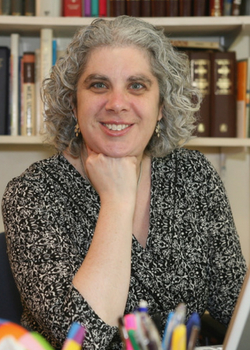Hanukkah is not a holiday that gets a lot of attention in the earliest rabbinic texts (the Mishnah and its sister text, the Tosefta). It is known as a holiday but only a few of the dos (say Hallel, read Torah) and don’ts (say Musaf, declare a fast day, have excessive wailing at a funeral) are described. The reasons for celebrating Hanukkah are never given, and its most central ritual, the lighting of the Hanukkah lamp, appears only incidentally, in a context that isn’t particularly about Hanukkah at all. The many details we now associate with the holiday (such as the miracle of the oil and all the instructions for when and how to light the Hanukkah lamp) will come later, in the Babylonian Talmud, citing earlier material but redacted several centuries years later.
That one, incidental mention of lighting the Hanukkah lamp in the Mishnah appears in Tractate Bava Kama 6:6, as part of an extended discussion of damages and accidents that may occur and who (if anyone) bears liability when they do. The case is one in which a camel bearing flax passes through a public street, and the flax catches flame on the lamp of a shopkeeper along the way. Who is liable depends on whether the lamp was properly inside the shop (and hence the camel driver would be liable) or unexpectedly outside (and the shopkeeper is the negligent and liable party).
But then a single rabbi adds this:
Rabbi Yehudah says: Regarding a Hanukkah lamp, he (the shopkeeper) is exempt.
The Tosefta (Bava Kama 6:28), which often parallels and elucidates the Mishnah, further states:
And so too Rabbi Yehudah says: Regarding a Hanukkah lamp, he is exempt, because he placed it there with permission. But the Sages say: either way (whether on Hanukkah or on a regular day), he is liable…
Rabbi Yehudah argues that since one is commanded to place a Hanukkah lamp (ideally) just outside one’s doorway – where it is most likely to be seen and thereby fulfill the underlying purpose of the commandment, to publicize the Hanukkah miracle – one shouldn’t be held liable for any damages it causes there. Perhaps he also means to say that camel drivers should be extra alert and careful during Hanukkah. But the Sages, by implication in the Mishnah (since Rabbi Yehudah expresses his view alone) and explicitly in the Tosefta, disagree with him.
Later legal codes continue to treat this situation as one of damages and torts, rather than Hanukkah observance. Both Maimonides in the Mishneh Torah (Laws of Monetary Damages, 14:13) and Yosef Karo in the Shulhan Arukh (H.M. 418:12) summarize the “basic” case and then add that the shopkeeper is liable “even if it were a Hanukkah lamp, because he should have sat and guarded it (Karo adds: that it not cause damage).” Note, though, that the law follows the view of the Sages, and not that of Rabbi Yehudah. As is often the case in the Jewish legal tradition, majority rules, and Rabbi Yehudah is outnumbered.
And therefore, what I find myself thinking about as I consider this law this year is also the underlying principle represented by the view of the Sages. We fought oppressors for our right to worship freely, and celebrate ever after that we were victorious with this ritual of lit lamps at our doorways. And yet we ourselves can and do put this simple restriction on our own freedom of ritual to protect each other – each of us is responsible to guard the flame we set out so that no one will be hurt by it. Rituals are not necessarily risk-free. We remain responsible for the damage our lamps may cause, even if we put them in the public thoroughfare by virtue of a commandment and with the full permission of our community. We have responsibilities to God, but those responsibilities stand together with and do not override our responsibilities to each other.
We are looking towards a Hanukkah this year that – like Passover, like Shavuot, like the holidays of Tishrei – will not look like it normally does, will not look like what we wish it could be. But hidden in this peripheral law of Hanukkah is a central tenet of what it means to be Jews who place the protection of human life above nearly every other value. Our rites serve God only if they do not willfully harm people, and only if we take responsibility to be sure they do not. May we find ways to celebrate this year that bring both praise to God for the miracles experienced by our ancestors in their time, and safety for our community in ours.
Hag Urim sameah – a happy Festival of Lights!


 Download PDF
Download PDF